Sakleshpur is a town located in the Hassan district of the Indian state of Karnataka. It is situated in the Western Ghats region of Karnataka and is known for its beautiful natural landscapes, coffee plantations, and pleasant climate. Sakleshpur is a popular tourist destination and is known for its lush green hills, trekking trails, and scenic beauty. It is approximately 220 kilometers (137 miles) from the state capital, Bangalore.
Sakleshpur may be small in size, but it looms large in popularity as a favored destination among travelers seeking solace in nature’s embrace. Over the years, it has gained a reputation as an offbeat yet accessible destination, attracting both adventure seekers and those in search of tranquility. The town’s serene ambiance, coupled with its diverse range of attractions, makes it an alluring choice for weekend getaways and extended vacations alike.
One of Sakleshpur’s most compelling draws is its location within the Western Ghats, a UNESCO World Heritage Site and a biodiversity hotspot. The Western Ghats are famed for their lush, mist-laden hills, dense forests, and an astonishing array of plant and animal species. Sakleshpur sits amidst this natural splendor, offering visitors a chance to immerse themselves in the pristine beauty of the region. Whether you are a nature enthusiast, wildlife lover, or simply in search of tranquility, Sakleshpur beckons with open arms.
In the following sections of this article, we will delve deeper into the natural beauty of Sakleshpur, its coffee plantations, trekking trails, waterfalls, historical and cultural attractions, adventure activities, accommodation options, local cuisine, and everything you need to know to plan a memorable journey to this captivating destination. So, lace up your hiking boots, pack your camera, and prepare to embark on a virtual journey through the wonders of Sakleshpur.
Historical Places to Visit in Sakleshpur
Sakleshpur, with its serene natural beauty, isn’t just about lush green landscapes and adventure. This charming town in Karnataka also boasts a rich historical heritage that beckons history enthusiasts and culture aficionados alike. From ancient temples showcasing intricate architecture to strategically designed forts from Tipu Sultan’s era, Sakleshpur is a treasure trove of historical wonders.
In this section, we invite you to embark on a journey through time as we explore the captivating historical sites that add a unique dimension to Sakleshpur’s allure. Discover the stories, architecture, and spiritual significance that make these historical places a must-visit during your sojourn in this idyllic Western Ghats town.
Manjarabad Fort
- Distance from Sakleshpur: Approximately 6 kilometers
- Best Time to Visit: The best time to explore Manjarabad Fort is during the winter months, from October to March, when the weather is cool and pleasant.
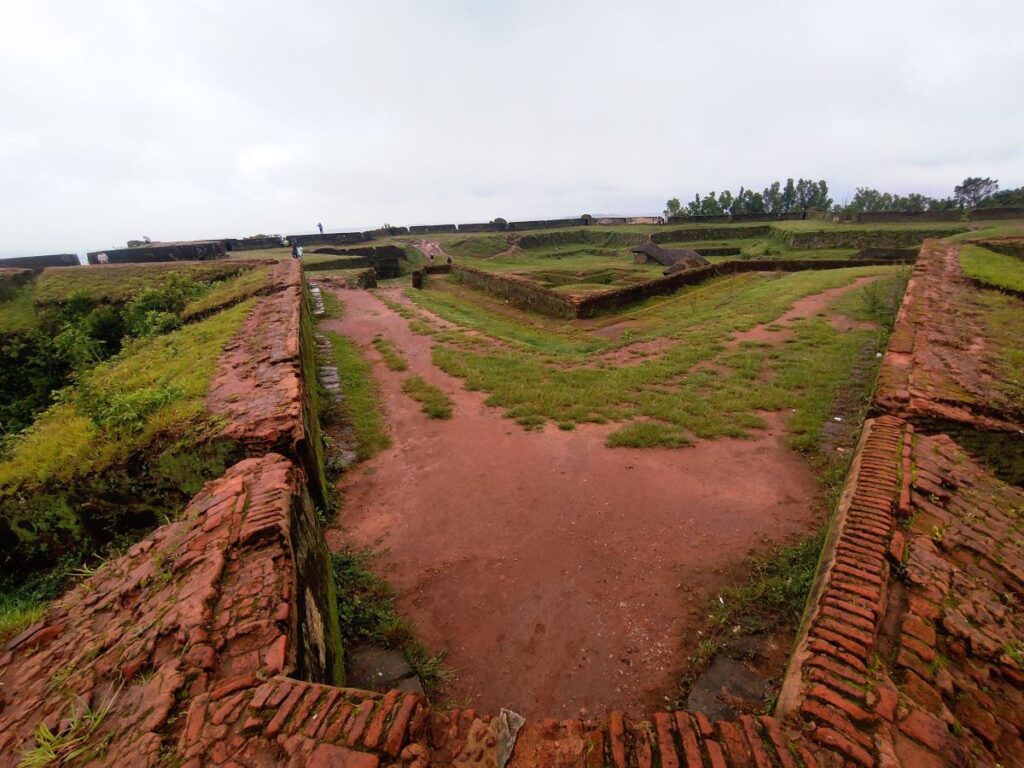
Manjarabad Fort, a star-shaped fort built during the 18th century, is a historical marvel that showcases the architectural prowess of its time. Constructed by Tipu Sultan, the fort was designed strategically to overlook the surrounding landscape and served as a defense outpost. Visitors can wander through its unique star-shaped layout, offering panoramic views of the Western Ghats.
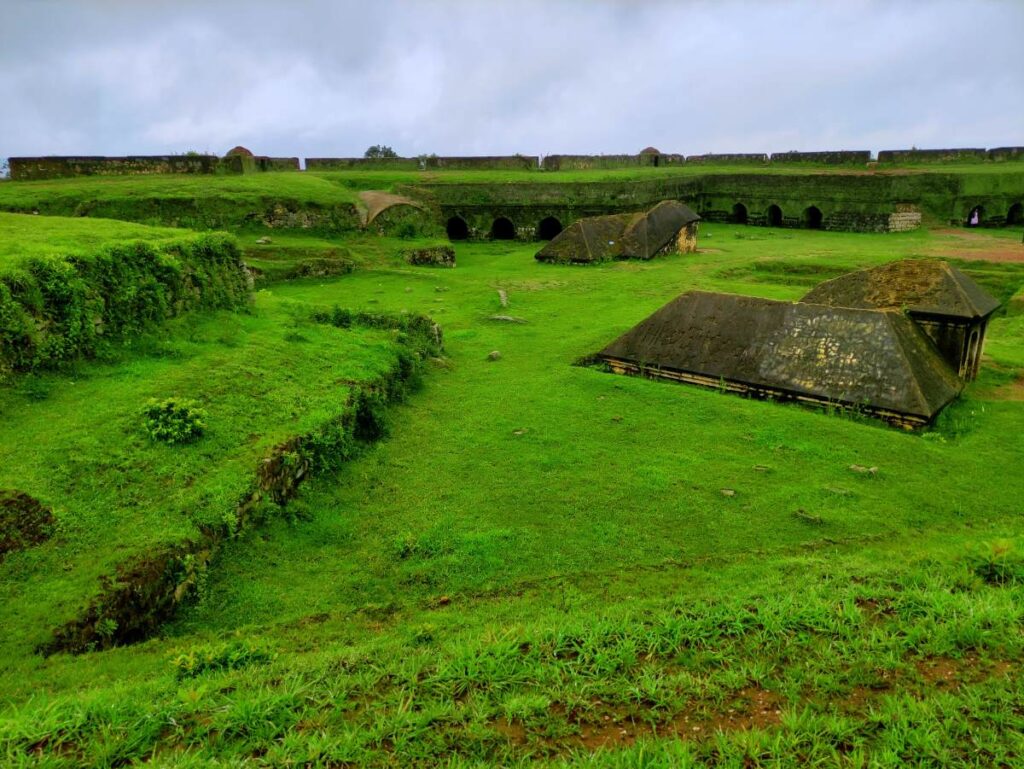
Sakleshwara Temple
- Distance from Sakleshpur: Located within Sakleshpur town
- Best Time to Visit: The Sakleshwara Temple can be visited throughout the year. However, the monsoon season (June to September) adds a special charm as the temple is surrounded by lush greenery.
The Sakleshwara Temple is an ancient shrine dedicated to Lord Shiva and is renowned for its Hoysala architecture. Its intricate carvings and the serene setting near the Hemavathi River make it a place of spiritual and historical significance. The temple’s architecture and the religious aura make it a must-visit spot for history and culture enthusiasts.
Bettada Bhairaveshwara Temple
- Distance from Sakleshpur: The temple can be reached by a 2.5 km trek to the top.
- Best Time to Visit: October to March is considered to be the best time for visiting Betta Byraveshwaya Temple. Winters and monsoons are the best time to visit.
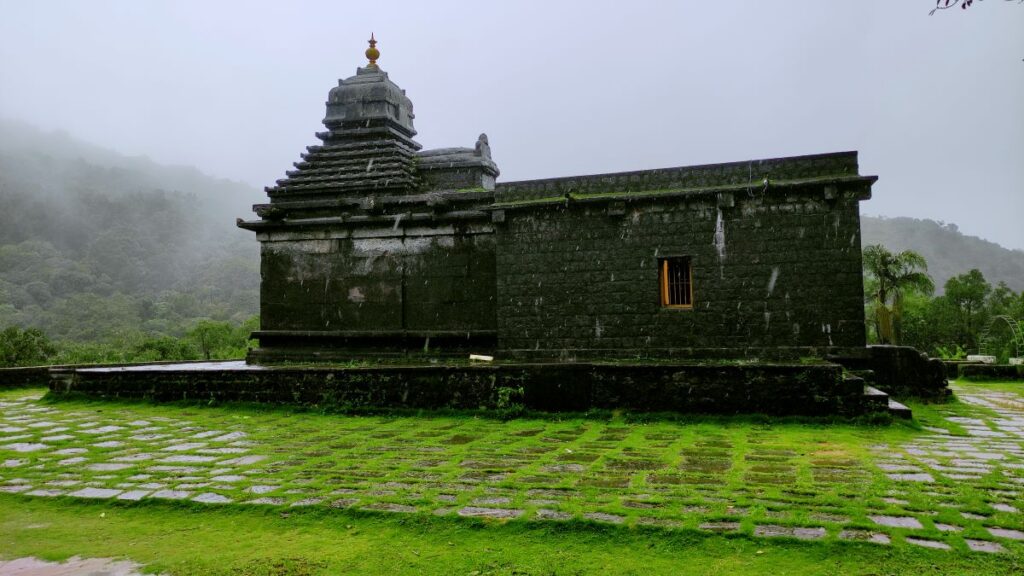
Nestled amidst the serene hills of Sakleshpur, the Bettada Bhairaveshwara Temple stands as a testament to the region’s rich cultural heritage. Dedicated to Lord Shiva, this ancient temple offers a tranquil sanctuary for spiritual seekers and history enthusiasts alike. Perched atop a hill, the temple not only provides a place for devout worship but also rewards visitors with breathtaking panoramic views of the surrounding landscape. The tranquil ambiance and the mystique of the temple make it a must-visit attraction in Sakleshpur, where history, spirituality, and natural beauty converge in perfect harmony.
Belur and Halebid Temples
- Distance from Sakleshpur: Approximately 50 kilometers
- Best Time to Visit: Belur and Halebid Temples are best visited from October to March, when the weather is cool and conducive for exploring the temples and their intricate sculptures.
While a bit farther from Sakleshpur, a visit to the Belur and Halebid temples is highly recommended for history buffs. These ancient temples, built during the Hoysala dynasty, are famous for their exquisite architecture and intricate stone carvings. The Chennakesava Temple in Belur and the Hoysaleswara Temple in Halebid are prime examples of Hoysala artistry.
Jenukallu Gudda
- Distance from Sakleshpur: Approximately 38 kilometers
- Best Time to Visit: Jenukallu Gudda can be explored year-round, but it’s particularly enjoyable during the post-monsoon months, from October to March.
Jenukallu Gudda, also known as the Honey Rock Hill, is a historical site surrounded by lush greenery. It is believed to have been a place where honey collectors used to gather honey. The area offers scenic views of the Western Ghats and a sense of tranquility, making it an ideal spot for history enthusiasts seeking a serene historical experience.
These historical sites in and around Sakleshpur offer a glimpse into the region’s rich past and architectural heritage. Whether you’re interested in ancient temples, forts, or natural historical wonders, Sakleshpur has something to pique your historical curiosity.
Trekking Places in Sakleshpur
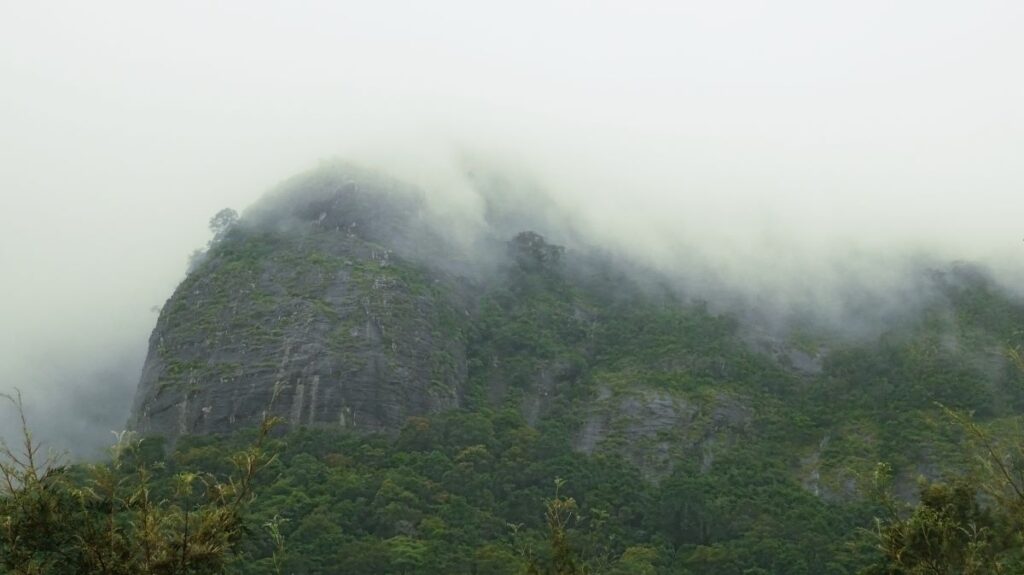
Nestled in the heart of the Western Ghats, Sakleshpur offers a paradise for trekking enthusiasts, beckoning with its diverse landscapes, dense forests, and winding trails. Whether you’re an experienced trekker seeking a challenging ascent or a novice looking for a memorable hiking experience, Sakleshpur has something for everyone.
Pandavar Gudda Trek
- Difficulty Level: Easy to Moderate
- Best Time to Trek: Ideal throughout the year, with the monsoon season (June to September) offering lush greenery.
Pandavar Gudda, also known as “Pandavara Betta,” is a relatively easy trek and an excellent choice for beginners. The trail leads you through picturesque tea and coffee plantations, dense forests, and opens up to panoramic vistas of the Western Ghats. Legend has it that the Pandavas from the Mahabharata once resided here, adding a touch of mythological intrigue to the trek.
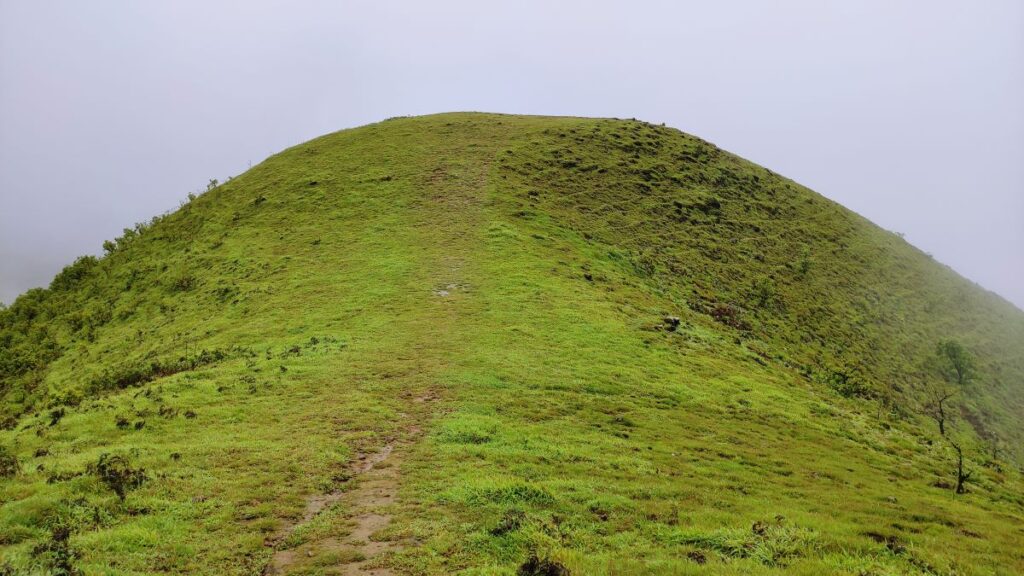
Jenukallu Gudda Trek
- Difficulty Level: Moderate
- Best Time to Trek: Post-monsoon months, from October to March
Jenukallu Gudda, or “Honey Rock Hill,” offers a moderate trekking experience that rewards adventurers with breathtaking views of the surrounding landscape. The trek takes you through meadows, forests, and rocky terrain, providing a balanced mix of challenges and natural beauty. As you ascend, the cool breeze and the distant calls of wildlife accompany you on this memorable journey.
Murkan Gudda Treks
- Difficulty Level: Varies (multiple trekking routes available)
- Best Time to Trek: Preferably during the post-monsoon season, from October to March
The Murkan Gudda region offers a plethora of trekking options, with varying difficulty levels to suit different preferences. These treks take you through thick forests, hilly terrain, and offer opportunities to explore the diverse flora and fauna of the Western Ghats. Whether you’re a seasoned trekker or a nature lover, Murkan Gudda has a trail that fits your adventure quotient.
Ombattu Gudda Trek
- Difficulty Level: Challenging
- Best Time to Trek: Recommended during the dry season, from November to February
For the more adventurous souls, the Ombattu Gudda Trek presents a formidable challenge. This trek is not for the faint-hearted, as it involves navigating rugged terrain and dense forests. However, the rewards are ample, including breathtaking vistas, hidden waterfalls, and the thrill of conquering one of Sakleshpur’s highest peaks.
Sakleshpur caters to trekkers of all levels, from beginners to seasoned experts. The trails are well-suited for those seeking a leisurely hike, as well as those in pursuit of a more demanding and exhilarating trekking experience. The diversity of options ensures that every trekker can find a path that matches their skill and fitness level.
Waterfalls in Sakleshpur
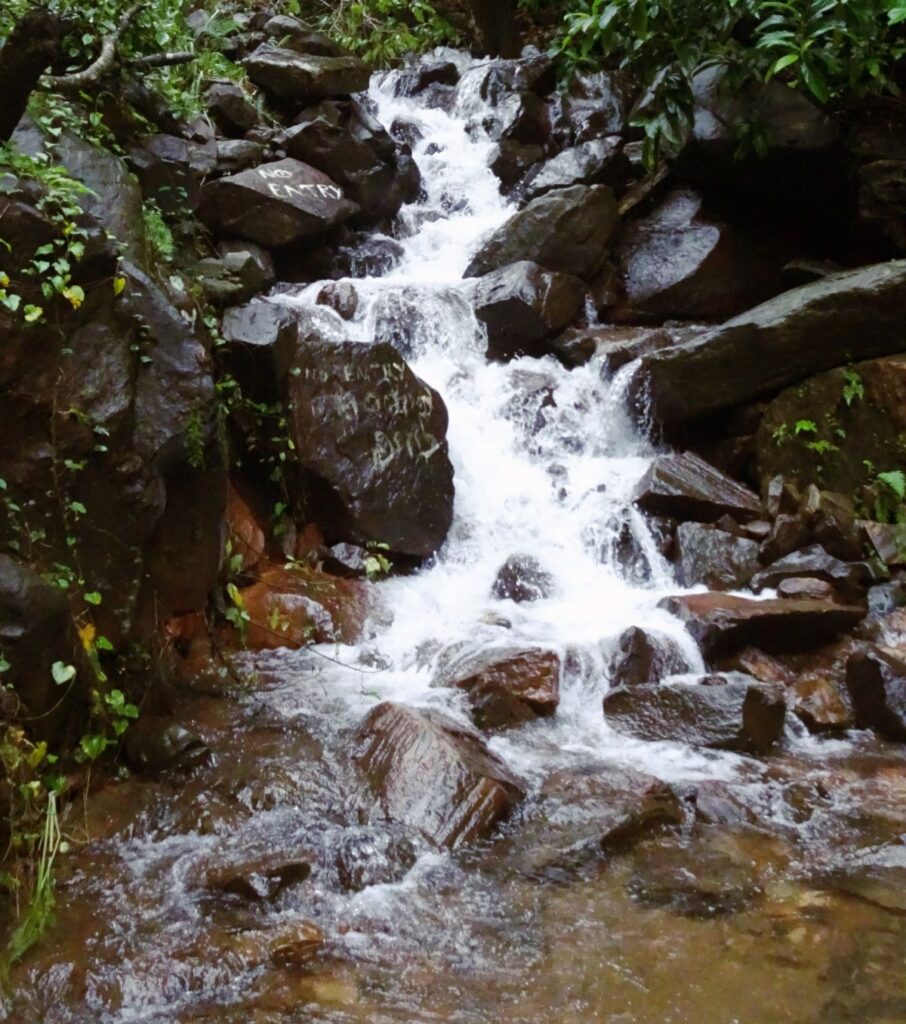
Mallalli Falls
Mallalli Falls is a majestic waterfall that plummets from a height of approximately 200 feet, creating a mesmerizing spectacle. Surrounded by lush greenery, this waterfall is a sight to behold, especially during the monsoon season when it’s in full flow. Mallalli Falls is famous for trekking and hiking. To access the waterfall, you need to climb about 600 steps. It is located at the base of the Pushpagiri Mountain range and is one of the tallest waterfalls in the state. The waterfall is created by the Kumaradhara River, which falls over 200 feet in two steps.
Best Time to Visit: The best time to witness the full grandeur of Mallalli Falls is during the monsoon season, from June to September. However, it’s also a beautiful sight to behold throughout the year.
Unique Features: What sets Mallalli Falls apart is its serene and less crowded ambiance. It’s an ideal spot for nature enthusiasts and photographers seeking tranquility and breathtaking scenery.
Magajahalli Waterfalls
Accessibility: To reach Magajahalli Waterfalls, you’ll need to trek through a forested area. The trek is relatively moderate and takes you through the beautiful surroundings.
Best Time to Visit: The post-monsoon season, from October to February, is an excellent time to visit Magajahalli Waterfalls. The water flow is gentler, making it safer for exploration.
Unique Features: The tranquility and untouched beauty of Magajahalli Waterfalls are its standout features. It’s an offbeat destination for those who prefer a more secluded and unspoiled natural setting.
Kukke Subramanya Waterfalls
Kukke Subramanya Waterfalls, also known as Kumaradhara Falls, is a stunning cascade located near the famous Kukke Subramanya Temple. It’s a series of waterfalls surrounded by lush forests and is known for its spiritual significance.
Accessibility: Accessible by a short trek from the Kukke Subramanya Temple, the falls are relatively easy to reach. The temple town of Kukke Subramanya is approximately 42 kilometers from Sakleshpur.
Best Time to Visit: The post-monsoon season, from October to March, is the ideal time to visit Kukke Subramanya Waterfalls. The area around the falls is at its greenest during this time.
Unique Features: Aside from its natural beauty, Kukke Subramanya Waterfalls hold religious importance, making it a destination for both nature lovers and pilgrims.
These enchanting waterfalls in Sakleshpur offer not only respite from the heat but also an opportunity to immerse yourself in the untouched beauty of the Western Ghats. Each waterfall has its own unique charm, ensuring that your visit to Sakleshpur is a journey filled with natural wonder and serenity.



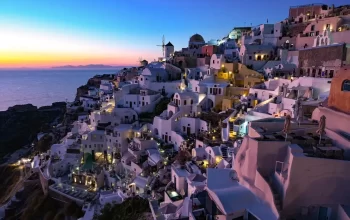
Reading about your adventures always ignites my wanderlust. Time to start planning my next trip!